

Mastering the Spin Move in Basketball: Step-By-Step
Are you ready to take your basketball game to the next level? Then you’ve come to the right place! In this step-by-step guide, we’ll show you how to master the spin move, a powerful technique that can leave defenders in the dust and create scoring opportunities. So lace up your sneakers and get ready to spin your way to on-court dominance!
Table of Contents
What is the Spin Move in Basketball?
When it comes to basketball, the spin move is a fundamental technique that every player should master. It involves quickly pivoting and spinning away from a defender to create separation and open up scoring opportunities. The spin move is a powerful offensive weapon that can help you evade defenders and leave them trailing behind.
The purpose of the spin move is to outmaneuver your opponent and gain an advantage on the court. By executing a swift spin, you can catch your defender off-guard and create space for a shot, a pass, or a drive to the basket. This move is particularly effective when you’re in a one-on-one situation and need to create separation from your defender.
One of the main advantages of the spin move is its ability to create separation. By spinning away from your defender, you force them to change direction and lose their defensive positioning. This opens up opportunities for you to attack the basket or find an open teammate for a pass. Additionally, the spin move allows you to evade defenders by quickly changing direction, making it harder for them to keep up with your movements.
Furthermore, the spin move can create scoring opportunities by throwing off your defender’s timing and balance. As you spin away, you can utilize the momentary confusion to launch a shot or drive towards the basket. The spin move is an effective way to keep your defender guessing and gain an advantage on the offensive end.
Why is the Spin Move Essential in a Player’s Arsenal?
As a basketball player, incorporating the spin move into your offensive repertoire is essential for several reasons. Not only does it add versatility to your game, but it also provides numerous benefits that can give you an edge over your opponents.
One of the key benefits of the spin move is its ability to outmaneuver opponents. By executing a well-timed spin, you can quickly change direction and leave your defender flat-footed. This sudden change in movement catches them off-guard, making it easier for you to blow by them and create scoring opportunities. The spin move is particularly effective in situations where you’re closely guarded or facing a defender who is larger or more athletic than you.
Moreover, the spin move helps you create scoring opportunities by creating space for shots or drives to the basket. By spinning away from your defender, you create separation and force them to play catch-up. This opens up the floor, allowing you to attack the basket with a clear path or take a jump shot while your defender is recovering. The spin move can also draw additional defenders towards you, creating opportunities for kick-out passes to open teammates.
Step-by-Step Guide to Mastering the Spin Move
Mastering the spin move may seem daunting at first, but with practice and a clear understanding of the technique, you’ll be executing it with confidence in no time. Let’s break it down into simple steps to help you grasp the fundamentals and visualize the movement.
- Establish a Strong Base: Start by standing with your feet shoulder-width apart, knees slightly bent, and your body balanced. This stable foundation will allow you to execute the spin move effectively.
- Read Your Defender: Before initiating the spin move, assess your defender’s positioning and anticipate their movements. This will help you choose the optimal direction to spin and catch them off-guard.
- Pivot and Spin: Begin by taking a quick step with your lead foot in the direction you want to spin. Simultaneously, pivot on your back foot, using it as the anchor point for your spin. As you pivot, swing your hips and rotate your body in the desired direction.
- Protect the Ball: Throughout the spin move, it’s crucial to keep the ball secure. Place your body between the ball and the defender, using your off-arm as a shield to protect the ball from being stolen.
- Accelerate and Finish: As you complete the spin, explode off your back foot and accelerate in the new direction. This burst of speed will help you create separation from your defender and create scoring opportunities.
Footwork and Body Positioning
When it comes to executing a successful spin move, proper footwork and body positioning are crucial. Let’s delve into the correct techniques to ensure you have the balance and control needed to pull off this move effectively.
- Footwork: Start by establishing a solid base with your feet shoulder-width apart. This stable foundation allows for better balance and agility during the spin move. When initiating the spin, take a quick step with your lead foot in the direction you want to spin. This step helps create momentum and sets the direction for your movement. Simultaneously, pivot on your back foot, using it as the anchor point for the spin. This pivot allows for a smooth rotation of your body.
- Body Positioning: As you execute the spin move, it’s essential to maintain proper body positioning. Keep your knees slightly bent, which helps with stability and quick changes in direction. Additionally, position your body between the ball and the defender, creating a protective shield. This positioning makes it harder for the defender to steal the ball and allows you to maintain control throughout the move.
- Balance and Control: Balance and control are vital during the spin move. Stay low to the ground and distribute your weight evenly between both feet. This low stance provides stability and agility, making it easier to change direction quickly. Focus on maintaining your balance throughout the entire move, keeping your core engaged and your eyes up to read the defense.
Timing and Reading the Defender
Timing is everything when it comes to executing a successful spin move. To maximize the move’s effectiveness, it’s crucial to read the defender’s movements and react accordingly. Let’s dive into how you can time the spin move effectively and exploit the defender’s positioning.
- Timing the Spin Move: To time the spin move effectively, pay close attention to the defender’s movements. As they approach you, observe their positioning and anticipate their actions. Look for signs of hesitation or imbalance that indicate an opportunity to execute the spin move. Timing is critical here; you want to catch the defender off-guard and exploit their momentary vulnerability.
- Reading the Defender: Understanding the defender’s positioning and reaction is key to maximizing the effectiveness of the spin move. Watch for cues that reveal their intentions, such as a shift in weight or a change in body positioning. If the defender is off-balance or leaning in one direction, it may be an opportune moment to execute the spin move in the opposite direction. By reading the defender’s movements, you can exploit their weaknesses and create openings for yourself.
Executing the Spin Move
Executing the spin move requires precise steps and a focus on maintaining control. Let’s go through the exact process of performing the spin move and understand the importance of staying low and in control throughout the maneuver.
- Step-by-step Execution: To execute the spin move, start by establishing your pivot foot. This foot will remain in place while the other foot initiates the spin. Place your pivot foot firmly on the ground, ensuring it stays grounded throughout the move. Next, take a quick step with your non-pivot foot in the direction you want to spin. Simultaneously, pivot on your back foot, using it as the anchor point for the spin. Rotate your body in the desired direction, keeping your eyes up to read the defense and maintain control of the ball.
- Staying Low and Maintaining Control: Staying low is crucial during the spin move. By keeping your knees slightly bent, you lower your center of gravity, enhancing your balance and stability. This low stance also allows for quick changes in direction, making it harder for defenders to anticipate your moves. Additionally, maintaining control of the ball throughout the spin move is vital. Keep your dribble low and secure, using your body as a shield against defenders. By staying low and in control, you increase your chances of successfully executing the spin move and creating scoring opportunities.
Common Mistakes to Avoid
When attempting the spin move, it’s important to be aware of common mistakes that can hinder its effectiveness. By avoiding these errors, you can ensure a successful execution of the move. Let’s take a look at some common mistakes and tips to avoid them.
- Telegraphing the Move: One common mistake is telegraphing the spin move, which means giving away your intentions too early. Avoid excessive body movements or changes in speed that may tip off the defender. Instead, maintain a smooth and fluid motion, disguising your intention to spin until the last moment. This element of surprise will catch the defender off-guard and increase your chances of success.
- Losing Control of the Ball: Another mistake to avoid is losing control of the ball during the spin move. This can happen if you dribble too high, fail to protect the ball, or rush the execution. To maintain control, keep your dribble low and secure, using your body as a shield against defenders. Stay focused and composed throughout the move, ensuring a tight grip on the ball.
Drills and Exercises to Improve Spin Move Proficiency
To enhance your spin move skills, incorporating specific drills and exercises into your training routine can be highly beneficial. Let’s explore some effective drills that focus on footwork, agility, and quickness.
- Cone Drill: Set up a series of cones in a straight line, spacing them about 3-4 feet apart. Start at one end and dribble towards the first cone. Execute a spin move around the cone, maintaining control of the ball. Continue dribbling to the next cone and repeat the spin move. This drill helps improve footwork, agility, and timing while executing the spin move.
- Mirror Drill: Pair up with a teammate or training partner. Stand facing each other, about arm’s length apart. One person acts as the leader and performs various spin moves while dribbling the ball. The other person mirrors the movements, trying to stay in sync. This drill enhances footwork, agility, and quickness, as well as the ability to read and react to defensive movements.
- Reaction Drill: Set up several cones in a random pattern on the court. Stand at the center of the court, facing away from the cones. Have a partner call out a cone number, and quickly turn around, dribble towards the called cone, and execute a spin move around it. This drill helps improve reaction time, decision-making, and the ability to execute the spin move in various directions.
Advanced Spin Move Variations and Counters
Once you have mastered the basic spin move, it’s time to explore advanced variations that can add versatility to your offensive game. Let’s delve into some advanced spin move variations, as well as counters that defenders might employ and strategies to overcome them.
- Spin-Back: The spin-back is a variation where, instead of completing a full spin and continuing in the same direction, you quickly change direction and spin back in the opposite direction. This move can catch defenders off-guard and create additional scoring opportunities. Practice this variation by executing a regular spin move, but instead of continuing forward, quickly pivot on your back foot and spin back in the opposite direction.
- Spin-and-Go: The spin-and-go combines the spin move with a quick burst of speed to explode past the defender. After executing the spin move, use your agility and quickness to accelerate in the opposite direction. This move is particularly effective when the defender overcommits to defending against the initial spin move. Practice this variation by focusing on a quick change of direction and explosive first step.
Defenders may attempt to counter the spin move by anticipating the spin and positioning themselves to intercept your movement. To overcome these counters, try the following strategies:
- Change Speed and Timing: Vary your speed and timing when executing the spin move to keep the defender guessing. By mixing up your pace, you can disrupt the defender’s timing and create openings for the spin move.
- Use Fakes and Misdirection: Incorporate fakes and misdirections into your spin move to throw off the defender’s balance and positioning. For example, a spin-fake involves starting the spin motion but quickly pulling the ball back and driving in the opposite direction. This can confuse the defender and create scoring opportunities.
As we conclude this journey of mastering the spin move in basketball, it’s clear that this offensive technique can be a game-changer. By focusing on footwork, agility, and quickness, we can enhance our spin move proficiency. Additionally, exploring advanced variations and countering defensive strategies adds versatility to our offensive arsenal.
FAQs: Mastering the Spin Move in Basketball: Step-By-Step
How can I improve my footwork for the spin move?
Practice cone drills and mirror drills to enhance footwork and agility.
What is the purpose of reaction drills in mastering the spin move?
Reaction drills improve quick decision-making during the spin move.
What are some advanced spin move variations to incorporate?
Try the spin-back and spin-and-go for added versatility.
How can I overcome defenders who anticipate my spin move?
Change speed and timing, and use fakes and misdirection to outwit defenders.
Can the spin move be effective in different directions?
Yes, the spin move can be executed in various directions based on the situation.
How can I practice the spin move effectively on my own?
Set up cones or markers and simulate game-like scenarios to practice the spin move solo.
Similar Posts
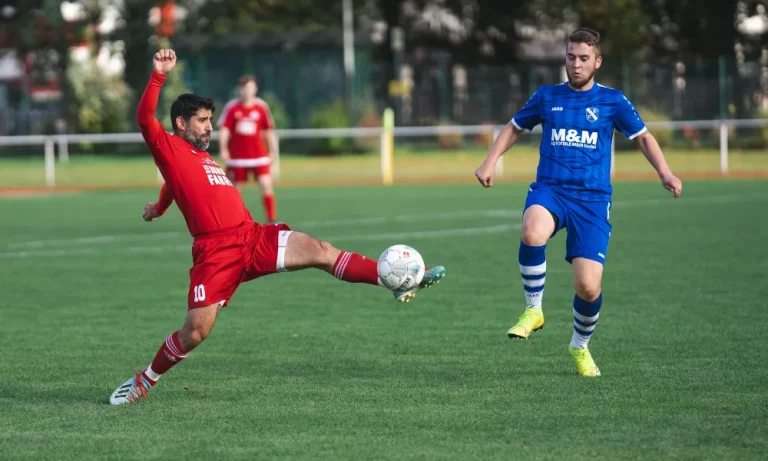
What Is A Double Pivot in Soccer?
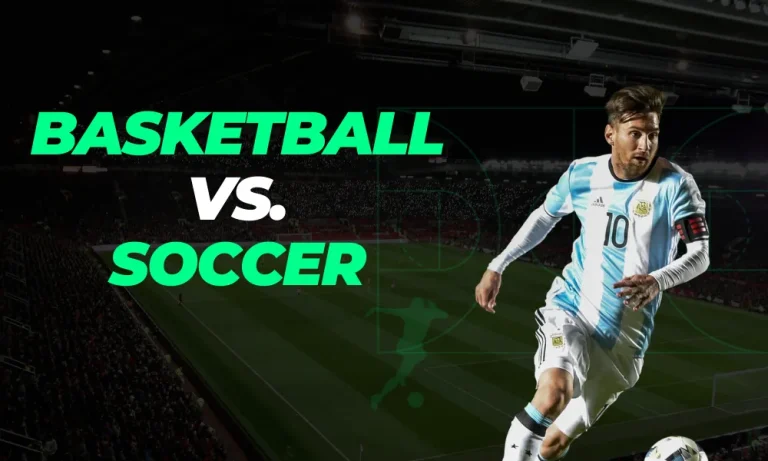
Soccer vs. Basketball: Which Sport Takes More Out of You
What does gd mean in football, how do you get a d1 offer in football.
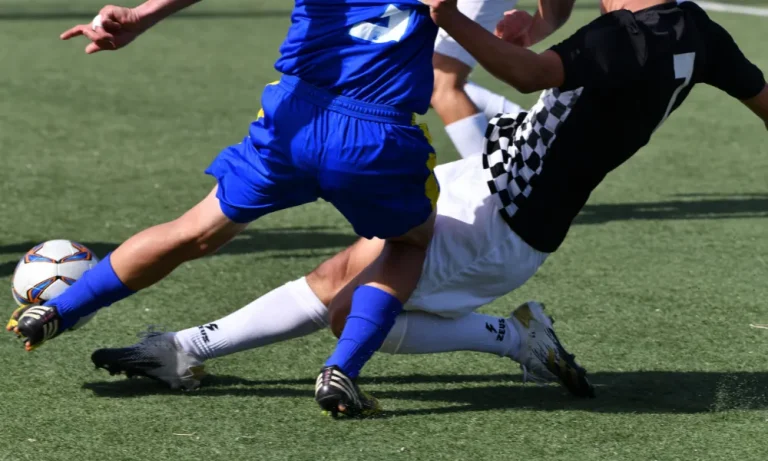
What is a Chip Block in Football?
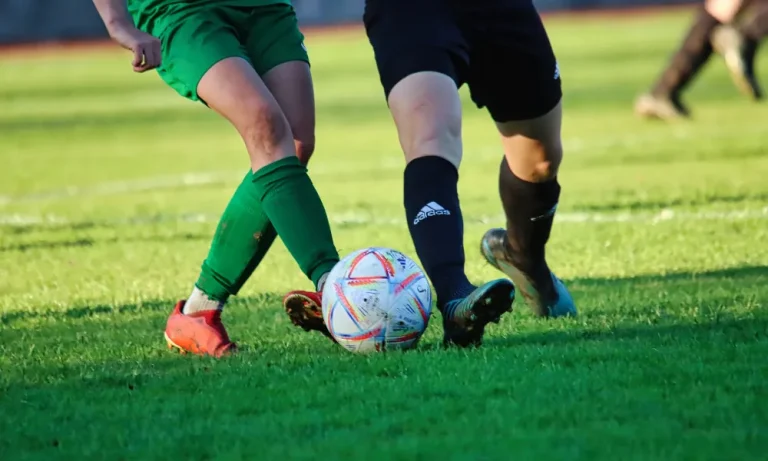
Tips to Develop a High Football IQ
Leave a reply cancel reply.
Your email address will not be published. Required fields are marked *
Save my name, email, and website in this browser for the next time I comment.
Last updated: Feb 09, 2023
Basketball Spin Move

A spin move in basketball is a move used by an offensive player with the ball to get by the defense. It involves the ball handler getting to a defender and spinning their body 360 degrees while moving laterally to create space between themself and the defender.
Table of Contents
How to perform a spin move, common mistakes during spin moves, when to use a spin move, combinations, picking up the ball.
The instructions here pertain to a spin move that starts with the ball in the player’s right hand. For a spin move that starts in the player’s left hand, simply reverse the directions.
To start, the offensive player begins by dribbling the ball in their right hand to approach the defender. Once the ball handler reaches the defender, they get low and put their left shoulder into the defender’s chest. As the offensive player does this, they place their left foot, angled to the right, between the defender’s feet. Both feet should be on the court at this point.
Simultaneously, the ball handler takes a strong , but controlled, dribble . This allows the offensive player to keep their hand on top of the ball through the entire move while still being in control of it. A stronger dribble will give the ball handler more time with the ball in their hand.
The offensive player stops their forward progress, but leans forward, placing more weight on the ball of their left foot, making sure to stay balanced. They then pivot on their left foot and pick up their right foot , turning in a clockwise fashion so they are facing the opposite basket .
Now, the ball handler’s body weight shifts to the heel of their left foot as they continue to swing their right foot around. This foot should not stretch very far from the pivot foot. As the offensive player spins back so they are facing the defender again, they take one more dribble with their right hand . This dribble, however, should be snatched back and end up in their left hand to make sure the ball is protected. Finally, the offensive player pushes off their right leg and blows by the defender.
One thing for players to avoid when performing a spin move is transferring the ball to their other hand immediately after taking that strong, controlled dribble discussed before. This makes it more difficult to get away from the defender and gives the defender an opportunity to steal the ball.
A dribbler can use a spin move in a few different situations. The first is in the open court , when the defender is pressing , or at least playing far away from his team’s basket. A quick, explosive spin move against a defender in this position can put the ball handler ahead of the defensive player and set up a good possession for the offense.
A spin move can also be used to find an opening for a jump shot . With the defender on the offensive player’s hip, the offensive player can create an open window to shoot the ball.
Moreover, a spin move is good for layups or other shots close to the basket. This can mean beating the offensive player’s initial defender near the basket or against help defenders who are scrambling to help their teammate.
Finally, a spin move can be used as a reaction to good initial defense . When a defender beats the ball handler to the spot, the ball handler can smoothly transfer his forward momentum into a spin move that will set him up in the other direction, away from the primary defender. The spin move as a reaction or counter can be incorporated into any of the three above uses.
Setting up a spin move can help it to be more effective. Either stepping in the direction away from the intended spin move or crossing over , for example, can help to move the defender in the other direction. This will create more space between the ball handler and the defender.
On some plays, the ball can be picked up after the dribble that starts the move off. Picking the ball up is effective if the ball handler is in heavy traffic and needs to protect the ball. As long as the player shoots the ball, or at least gets rid of it, by the time he takes two steps, this is not a traveling violation.
What is a spin move in basketball?
A spin move is a 360 turn made by a ball-handler to evade a defender. The move is used constantly at all levels of basketball, as it has proven to be a successful way to elude defenders. Some of the best ball-handlers in the world turn to the spin move every time the step on the court.
Is the spin move difficult to learn in basketball?
The spin move is generally considered to be one of the most difficult skills to master when learning basketball. The spin move is difficult to learn because it is very easy to make a mistake that would turn it into a traveling violation. It is also difficult for new players to learn to spin effectively due to the disorienting nature of the spin, which can throw off aim and direction.
Pages Related to Basketball Spin Move
- Basketball Shot Types
- Basketball Skills and Techniques
- Basketball Stride Stop
- Basketball Swing Step
- Basketball Reaction Time
- Basketball Step Over
- Basketball Gear and Equipment
- Basketball History and Culture
- Basketball Rules and Terminology
- Basketball Skills and Techniques
Traveling in Basketball: Rules and Violations
Written by: Basketball Universe
Last updated: May 2, 2023

Welcome to the vibrant world of basketball, where quick moves and fast breaks make for an exhilarating experience! In today’s blog post, we’ll delve into one of the most essential but often misunderstood elements of the game – the enigmatic traveling violation. Whether you’re a die-hard fan or simply an inquisitive reader, we’ve got you covered as we break down the rules and violations surrounding traveling in basketball. So, lace up those sneakers, and let’s hit the court as we embark on an exciting journey of discovery!
Traveling is a violation in basketball that occurs when a player takes too many steps without dribbling the ball. To avoid traveling, a player must establish a pivot foot and move only their non-pivot foot when not dribbling. Key traveling violations include lifting the pivot foot before dribbling, taking more than two steps when catching the ball, or taking a step while holding a dribble. Referees enforce traveling rules to maintain fairness and skill development in the sport.
Mastering the Footwork: A Key to Success
Traveling may seem like a simple violation to avoid, but perfecting the art of legal footwork can be challenging. Dedication to training is crucial for players to develop this skill and minimize traveling violations. Here, we’ll take a closer look at the complex footwork required to master basketball rules and regulations related to traveling.
Understanding the Pivot Foot
The pivot foot is the cornerstone of legal footwork in basketball. Selecting the correct pivot foot is essential in eliminating traveling violations. To designate a pivot foot, a player must adhere to the following guidelines:
- Right-handed players typically select their left foot as the pivot foot, while left-handed players usually choose the right foot.
- Once a pivot foot is established, the player may only move their non-pivot foot to maintain their position on the floor.
- A player can lift their pivot foot, but must release the ball before it contacts the ground again.
Change of Pivot Foot
Changing the pivot foot usually results in a traveling violation. To avoid this error, a player must dribble the ball before executing a change of direction or foot position. If a player switches their pivot foot without dribbling, a referee will call a traveling violation.
Catch and Go: Steps Allowed
Another vital aspect of avoiding traveling violations is knowing the steps allowed when receiving a pass or picking up a dribble. Players need to adhere to these guidelines during a drive or catch-and-go situation:
- When receiving a pass or picking up a dribble, a player may use one step in any direction before establishing a pivot foot.
- Players must establish a pivot foot after that initial motion.
- When in motion, players can take a maximum of two steps after ending their dribble or catching a pass.
- Taking three or more steps results in a traveling violation.
Jump Stop: A Useful Technique
A jump stop is a technique players employ to establish both feet as potential pivot feet while preventing traveling violations. This move involves landing on both feet simultaneously after a jump, allowing the player to choose either foot as a pivot foot. Mastering this technique enhances control and provides flexibility during games.
An Inside Look at NBA Traveling Guidelines
The NBA has specific rules and guidelines for traveling violations. Understanding these regulations will help players conform to the professional standards and impart valuable insight to our readers. Let’s explore some of the key NBA traveling guidelines:
Three Fundamental Traveling Scenarios
The NBA outlines three principal traveling scenarios to simplify the understanding of traveling violations. These scenarios include:
- Receiving the Ball (Catch and Go): During a catch-and-go situation, a player receives the ball and moves one or both feet before establishing a pivot foot. When receiving the ball, a player may land on both feet, then establish a pivot foot. Taking more than two steps leads to a traveling violation.
- Two-count Rhythm: The NBA allows players to execute two steps when picking up the ball without any dribble. These steps follow a “gather and 1-2” rhythm. If a player travels beyond the allotted two steps, it is considered a violation.
- Up and Down Violation: This occurs when a player jumps with the ball in their hands and lands back on the ground without releasing it. In this instance, the referee will call a traveling violation.
NBA Traveling vs College and High School Rules
NBA traveling rules slightly differ from those of college and high school levels. The NBA allows players more flexibility in the “gather” motion and the “two-count rhythm.” Amateur levels tend to strictly enforce these rules, emphasizing the necessity for players to adapt to different regulations throughout their basketball journey.
Unique Scenarios & Focusing on Details
Beyond fundamental rules, unique scenarios in the game often spur great debate among fans, players, and referees. Understanding details and being attentive during these exceptional cases will help clarify gray areas in traveling violations. Let’s discuss some of these particular situations:
Going Out of Bounds
When a player with the ball steps out of bounds and then re-enters the court, a traveling violation is called. The opposing team is awarded the ball.
Landing on the Ground
If a player falls while holding the ball and touches the ground with their knees or any part of their body other than the feet, the referee will call a traveling violation.
Double Dribble or Discontinued Dribble
A discontinued dribble often leads to a traveling violation. A player cannot dribble, then touch the ball with both hands before dribbling again (known as a double dribble). Doing so will cause a turnover.
Spin moves are an effective technique to evade defenders but often lead to confusion regarding traveling violations. Key points for a legal spin move include lifting the pivot foot before starting the dribble and maintaining the dribble until the other foot touches the ground.
Dealing with Traveling Violations: Tips for Coaches and Players
Traveling violations, though common, can have a significant impact on the game’s outcome. To avoid these situations, both coaches and players can benefit from the following tips.
Coaching Tips
- Emphasize footwork fundamentals during practice drills.
- Watch game footage with players to pinpoint areas where traveling violations occur.
- Use video reviews to compare different players’ footwork techniques.
- Organize scrimmages where referees enforce traveling violations to improve players’ situational awareness.
Player Tips
- Practice dribbling techniques, including maintaining the dribble until the other foot touches the ground during spin moves.
- Master the jump stop to maximize footwork flexibility.
- Work on conditioning to improve balance and minimize the risk of traveling when falling or attempting difficult moves.
- Study professional players’ footwork to learn effective techniques and methods.
International Traveling Rules
The FIBA governs international basketball rules, which can also impact the game’s traveling regulations. Familiarizing ourselves with global nuances helps players adapt to different styles of play.
Differences in FIBA Traveling Rules from NBA Rules
FIBA traveling rules vary slightly from NBA rules, particularly concerning the allowed steps after receiving a pass or ending a dribble. While both FIBA and NBA allow a two-step motion, FIBA guidelines expect players to establish a pivot foot before initiating their first step. Developing an understanding of these subtle differences will help athletes transitioning to international play.
Other Unique FIBA Traveling Rules
FIBA regulations also impose some unique traveling rules, such as the “zero step” rule. The zero step refers to a player’s initial movement when starting a dribble or after receiving a pass. In FIBA, the zero step is not counted as one of the two allowed steps in a catch-and-go situation, offering more flexibility in footwork.
Traveling in basketball may seem like a straightforward concept, but as we have explored, there are numerous intricacies and subtle differences in its rules and regulations. Mastering footwork and understanding global variations can make all the difference in elevating a player’s game and preparing them for success both domestically and internationally.

Famous Traveling Controversies in Basketball History
Throughout basketball history, traveling violations have sparked numerous controversies, heated debates, and unforgettable moments in the sport. Delving into a few such incidents can offer unique perspectives on the implications and interpretations of traveling rules in various circumstances.
The Infamous Michael Jordan Shuffle
During the 1992 NBA Finals, Michael Jordan executed an iconic move where he changed hands while airborne and scored a breathtaking layup. However, the lead-up to this move has since been debated as a potential traveling violation. Some argue that Jordan lifted his pivot foot twice, resulting in an illegitimate basket. Regardless, the incident has fueled conversations about traveling violations for years.
The LeBron James “Crab Dribble”
A traveling controversy arose during a game between the Cleveland Cavaliers and Washington Wizards in January 2009. LeBron James executed a unique “crab dribble” to score, but the referee called a traveling violation. James defended his move, sparking a debate on the legitimacy of the “crab dribble.”
Steph Curry’s Controversial Steps
In February 2016, Golden State Warriors’ Stephen Curry made headlines when he took what appeared to be more than two steps during a game-winning play against the Oklahoma City Thunder. The NBA later released a statement admitting an error in judgment and that a traveling violation should have been called. The incident ignited controversies surrounding the enforcement of traveling rules.
How Traveling Violations Impact Different Levels of Play
Traveling violations can profoundly impact games at various levels of play, from amateur to professional. Understanding these implications can help players, coaches, and fans appreciate the significance of enforcing traveling rules.
Impact on Amateur Levels
At the high school and college levels, strict enforcement of traveling violations promotes skill development and discipline. Reducing the number of steps allowed encourages players to develop essential dribbling techniques, improving their overall game. Traveling violations also provide learning opportunities for younger athletes, shaping their understanding of the sport’s fundamentals.
Impact on Professional Levels
At the professional level, traveling violations can turn the tide in closely-contested games. As star players often execute highly nuanced moves, traveling calls may be subjective and prone to controversy. Stricter enforcement could impact scoring in the professional game and influence specific player performances. Ultimately, the interpretation and application of traveling rules can have a lasting impact on the careers of professional players and their teams’ success.
Importance of Referee Training and Interpretation
Referee training and interpretation play crucial roles in enforcing traveling violations consistently and accurately. By investing in referee development, the sport can maintain its integrity and promote fair competition.
Referee Training Programs
Both national and international organizations, such as the NBA and FIBA, invest in referee training programs that focus on rule interpretations, including traveling violations. These programs employ video analysis, coaching sessions, and educational resources to fine-tune referees’ understanding of traveling rules and improve their in-game decision-making.
Impact of Referee Interpretation
Referee interpretation of traveling rules is crucial in maintaining consistency in enforcement. A referee’s ability to distinguish between legitimate moves and violations can profoundly influence a game’s outcome. Ongoing education and development ensure referees make accurate calls, fostering fairness in competition and upholding the sport’s values.
Traveling violations are a critical aspect of the game of basketball, affecting players, coaches, and referees alike. By mastering footwork techniques, adhering to established rules, and promoting consistent enforcement, the basketball community can ensure fair competition while fostering skill development and sportsmanship at all levels of play.
FAQ: Frequently Asked Questions on Traveling Violations
Traveling in basketball raises a variety of questions, ranging from fundamental rules to exceptional situations. Our FAQ section is designed to address some of the most common questions on this topic, providing readers with a comprehensive understanding of traveling violations in basketball.
1. What constitutes a traveling violation in basketball?
Traveling is a violation in basketball that occurs when a player takes too many steps without dribbling the ball. This violation can result from lifting the pivot foot before dribbling, taking more than two steps when catching the ball, or taking a step while holding a dribble.
2. What is a pivot foot, and why is it important?
A pivot foot is a player’s stationary foot, providing a point of rotation during movement. Selecting the correct pivot foot is crucial in avoiding traveling violations since lifting the pivot foot before dribbling or switching the pivot foot without dribbling results in a traveling call.
3. How many steps are allowed after catching the ball or ending a dribble?
A player can take a maximum of two steps after catching the ball or ending their dribble. Taking three or more steps will be considered a traveling violation and result in a turnover.
4. How do NBA traveling rules differ from college and high school rules?
NBA traveling rules differ slightly from college and high school regulations by allowing more flexibility in a player’s “gather” motion as well as the “two-count rhythm.” College and high school levels generally enforce these rules more strictly.
5. How can great footwork help prevent traveling violations?
Great footwork can help prevent traveling violations by enabling players to maintain balance, control, and movement within the legal constraints of the game. Proper footwork techniques, such as the jump stop, can offer additional flexibility, allowing players to execute moves without committing violations.
6. Do international basketball rules, such as FIBA, have different traveling regulations?
Yes, FIBA (the international governing body of basketball) has different traveling regulations than NBA rules. FIBA requires players to establish a pivot foot before initiating their first step, while the NBA provides more leeway in the “gather” motion.
7. What happens when a player is called for a traveling violation?
When a referee calls a player for traveling, the game is stopped, and the opposing team is awarded possession of the ball at the spot where the violation occurred.
8. What are some common situations that often result in traveling violations?
Some common situations that may result in traveling violations include switching the pivot foot without dribbling, walking or shuffling feet when holding the ball, and taking extra steps during a drive to the basket after ending a dribble.
9. How can players and coaches work to reduce traveling violations?
Players and coaches can reduce traveling violations by focusing on footwork fundamentals during practice, reviewing game footage to identify problematic areas, and participating in scrimmages with referees who call traveling violations to improve situational awareness.
10. Is there any controversy regarding how traveling is called in the NBA?
Yes, there is ongoing debate and controversy regarding traveling enforcement in the NBA. Many argue that NBA referees are not consistent in their calls, and some believe that star players receive preferential treatment, often avoiding traveling calls for similar actions that would be called a violation for other players.
Other Categories

How Do They Put Temporary Logos on Basketball Courts?

Five-Second Inbound Rule in Basketball

What’s a Pinch Post in Basketball?

What’s a Curl Cut in Basketball?

How Many Basketball Courts Fit in a Soccer Field?

Three-to-Make-Two Free Throw Rule in Basketball
Featured posts.
How To Do A Spin Move In Basketball
Augie Johnston 4 Comments
November 18, 2014

If you don’t know how to do a spin move in basketball then you’re messing up.
Just joking, you’re actually doing the right thing…because you’re in the right place to learn everything you need to know to start practicing, then using the spin move.
First you need to know that this is a great move to use in the following ways:
- Blowing past a defender in the open court.
- When a defender cuts you off as a counter move.
- Creating space to get off a jump shot.
- A way to finish inside by spinning off of help defenders.

as give you a drill you can do to practice your spin move.
First lets talk some about the technique my young Jedi 🙂
When you approach the defender you want to take what would seem like an extra dribble.
That dribble is the one that is going to be used to make sure you gain the most distance away from the defender as possible.
But more importantly, that "extra" pound dribble gives you the ability to bring the ball all the way around (almost 360 degrees), and past the defender.
So the biggest problem that players have with this move is that they have poor ball control and can't take the basketball from the pound dribble all the way around to complete the spin move.
Ball Control : The ability to keep the ball in your hand (without carrying) for a longer amount of time while at the same time moving the ball to where you want it to go.
So instead what they do is they grab the basketball with their other hand and spin hard in the other direction just like shown in the pictures below:
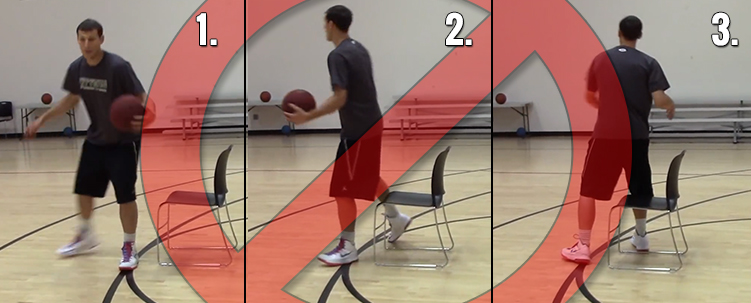
There are a few reasons you don't want to do your spin move like that.
- The defender could reach and steal the ball.
- You won't be able to separate yourself from the defender.
If done correctly not only will the basketball be protected, but you will be able to get more distance away from the defender.
Lets take a look at this move in depth.
I hope you learned something there.
Now lets talk about when this move is used in the games.
Here are the 4 most common situations where you will see this move used.
As a Counter When a Defender Cuts You Off
To blow by a defender in the open court, to create space to get off a jump shot, as a way to finish inside.
I just love this move.
And I'm falling in love with it even more as I'm writing this article.
It's not the flashiest move (although Kyrie Irving makes it look sweet), but it is a super effective way to change direction on a defender while almost forcing them in the opposite direction (like Carmelo Anthony does in his clip above).
This soon could replace the In N Out as my favorite move.
One thing is for sure...
I'm definitely going to start working on it more.
Below is a drill you can use to practice your spin move into your shot.
Please support Baller Boot Camp by sharing this article and unlocking the video.
RELATED POSTS

Destroy your Defender: The Best…

Basketball Dribble Moves To…

3 Basketball Moves That All…

3 Important Basketball Moves For…
Augie Johnston
Spin moves are also great moves for post players to work on.
Don’t be afraid to ask a relevant question here!
how to improve left hand dribling and shooting?
Dedicate 15 minutes each day to only using your left hand to dribble and shoot with.
Leave A Response Cancel reply
* Denotes Required Field


- Basketball Athleticism 1
- Dribbling Drills 15
- Shooting Drills 13
- Basketball Moves 40
- Basketball Tips 30
- Motivation 3
- Podcasts 18
- The Basketball Training Series 1
- Uncategorized 8
Copyright © 2013 · BallerBootCamp.com · All Rights Reserved
- Terms Of Service
- Privacy Policy
Blox Fruits Wiki
Hi there! If you're new to this wiki (or fandom) and plan on making an account, please check out our Rules page , for information on new accounts and some rules to follow.

- View history
This fruit is the second cheapest fruit and is not recommended to use in the First Sea , because it is not good for grinding, and many other fruits are better for both grinding and PvP.
- 1 Abilities
- 4 Navigation
Abilities [ ]
The following results are tested on NPCs. The variables that were used to test include: 600 mastery, 2550 points on Fruit Stats and no accessories . The results are for reference only, there is no guarantee that all of them are 100% correct.
Overview [ ]
- This Blox Fruit was added in Update 15 and reworked in Update 20 .
- This fruit and Rocket are always in the Stock in-game.
- Kilo was later changed to Rocket after Update 20 .
- Despite being more expensive than Rocket , some players regard Spin worse than Rocket as the damage dealt is slightly lower and it has less stun and combo potential.
- The pre-rework variant of this fruit is used by the Marine Rear Admiral NPCs.
- After Update 20 , spin's icon changed to be blue. This was later reverted.
Navigation [ ]
- 1 Blox Fruits "Stock"
- 2 Blox Fruits

IMAGES
VIDEO
COMMENTS
This Rule Review segment is reviewing plays involving traveling, specifically the spin move. This video is dedicated to educating basketball officials on und...
A TikToker recently posted a video where he explained why LeBron James' signature spin move is a travel, which is not called by the referees. The TikToker took a step-by-step breakdown to show ...
The full content of each travel rule is available separately along with selected highlighting of differences at phillyref.com travel rules. Supplementary NFHS, NCAA, NBA and FIBA ... Player lifts pivot foot and returns it to floor as part of spin move. 21 Travels in 40 seconds: Clips from the USA Men's basketball team in the 2008 Olympics. ...
The spin move might be the most underrated move. Learning this and adding it to you... In this video Jordan Lawley breaks down how to get the perfect spin move. The spin move might be the most ...
Step-by-step Execution: To execute the spin move, start by establishing your pivot foot. This foot will remain in place while the other foot initiates the spin. Place your pivot foot firmly on the ground, ensuring it stays grounded throughout the move. Next, take a quick step with your non-pivot foot in the direction you want to spin.
Travel in the post, lifts pivot foot on spin move Travel on Drive, drags pivot foot after gather Legal play, gather and then takes 2 steps "This is an example of a traveling violation after a player has gathered the ball. The offensive player, De'Andre Hunter, will end his dribble and he establishes his left foot as his pivot foot.
Many cases in which a spin move is not a traveling violation occurs when a post player, with his or her back to the basket, makes a move close to the basket and doesn't bring the swing foot back to the ground. Don't rule a spin move as a traveling violation unless you're positive. In the meantime, watch video of spin moves, especially in ...
Basketball Officiating CallsWas this spin move a travel? Explain why or why not. Video Courtesy: ESPN/Fox/Big Ten Network and XOSdigitalsports
Variation #2 of the Spin Move Drill: Again, same steps as the main drill, but this time, incorporate a behind the back move after the spin is finished. Pound it, spin move, then behind the back. Every part of the move has to be tight and efficient. Make sure you already have a stable and gathered position for a strong behind the back dribble.
A spin move in basketball is a move used by an offensive player with the ball to get by the defense. It involves the ball handler getting to a defender and spinning their body 360 degrees while moving laterally to create space between themself and the defender. Table of Contents. How to Perform a Spin Move. Common Mistakes During Spin Moves.
Spin Moves. Spin moves are an effective technique to evade defenders but often lead to confusion regarding traveling violations. Key points for a legal spin move include lifting the pivot foot before starting the dribble and maintaining the dribble until the other foot touches the ground. Dealing with Traveling Violations: Tips for Coaches and ...
A quick spin move toward a shot with a couple of defenders moving in to block the shot is a lot to keep track of. And if the dribbler spins away from the ref, the whole thing can be out of sight. When I get brought up short, I'll try to pay more attention to the next one.
Blowing past a defender in the open court. When a defender cuts you off as a counter move. Creating space to get off a jump shot. A way to finish inside by spinning off of help defenders. In this article I'll show you those exact situations in real NBA games, show you the technique needed to do this move, as well.
Yes. if it's a post spin move no if it's the driving spin move than in many cases if you don't do it correctly it might be a carry, doing it correct is when you don't place your hand fully under the ball. Most of the time, technically it'd be a carry. But realistically no.
Otherwise just complain to the refs. Make sure to keep your hand above the ball. If you stop the balls motion it will count as you picking up the dribble, and your spin move will probably be called. Step 1: make it to the NBA Step 2: do whatever you want because traveling doesn't exist in the NBA.
How to Perfect the Spin Move: Basketball Moves Masteryhttp://shotmechanics.com/free-scoring-workout (FREE WORKOUT)Today you're going to learn the simple but ...
Its a travel in basketball but the NBA is more about entertainment so they'll let it go unless they need to slow a team down. no. Pre-2009 this would have been a travel, but apparently today it's perfectly legal. Sure does look like a lot of walking without dribbling to me though.
Spin has two travel moves; the (X) move (Tornado Assault) and the (F) move (Helicopter Flight). Easily obtainable due to Spin always being on stock in addition to its cheap price. [Z] Razor Wind. Decent damage. [X] Tornado Assault. The user can direct the attack using their cursor, allowing for some combo potential.
By the strictest interpretation of the rules, it's a travel. When you plant and jump off two feet, your pivot foot (in Parker's move in the OP vid, his right foot) should not slide or move from pivot point. Parker looked like he jumped off two feet due to his quickness. 1. Reply.
5 WORST Spin Move Habits + INSTANT FixesIn this basketball tutorial you'll see dribbling tips to help you make your spin move better in minutes.When you make...
The winds at the airport appeared to be strong enough to move an American Airlines 737 away from its gate. Check out the video below: American Airlines 737-800 pushed away from its gate at DFW ...
Travel in the post, lifts pivot foot on spin move. "This is an example of a traveling violation for lifting a pivot foot. Domantas Sabonis, the offensive player who receives the ball in the post, establishes his right foot as his pivot foot. He then raises his right foot, his pivot foot, off the floor prior to releasing the ball on the dribble.
Moved Permanently. The document has moved here.
Plant that right foot, and spin to land your left foot. Right foot was the gather. Now left foot is your first step. Complete the spin, and you can land your right foot. Now, your left was your pivot- you can lift it up as long as you don't land it back. Lift it, and follow through by jumping with your right to finish. That's not a travel.
Learn how to do the spin move in this basketball basics for beginners tutorial. NBA players like Chris Paul, Derrick Rose, and Kyrie Irving have mastered th...